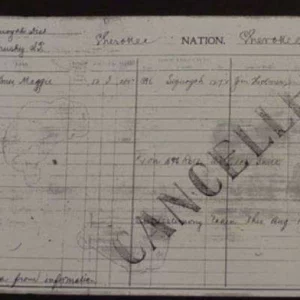Are you familiar with the Native American Chicken Dance?
No, this is not the corny chicken dance people do at skating rinks and school dances. This chicken dance is one of the oldest and most symbolic dances known to many Indigenous Nations throughout North America.
And we’re not talking about the typical chicken you see in cartoons or on logos. The Indigenous Chicken Dance is based on the prairie chicken, which you’ll learn more about in this article.
If you regularly attend powwows or celebrate Indigenous culture in other ways, you may have witnessed individuals or groups performing this beautiful, intricate dance; it showcases incredible synchronization and artistry that can only be truly appreciated by those intimately acquainted with its history.
Find how the Native American Chicken Dance came to be and explore why it has become so iconic among Indigenous cultures—so put on your dancing shoes and let's get started!
The Prairie Chicken
There are two main categories of the prairie chicken, the lesser and the greater, depending on what area in North America they inhabit. The greater prairie chicken dwells throughout the Great Plains, from Canada to the Gulf Coast. Lesser prairie chickens live in the southern Great Plains, mainly in Colorado, Kansas, Oklahoma, New Mexico, and Texas.
The mating dance prairie chickens do each spring inspired the Native Chicken Dance. When that time comes, prairie chickens head to their “stage” to dance, referred to as their “booming ground.” Bird experts say their unique mating dance entails: “extending their orange eye combs, lowering the head, raising two tufts of feathers on the neck, and pointing the tail slightly forward. They stamp their feet on the ground, clicking their tails, shaking and lowering their wings until they touch the ground. They expand bright orange air sacs in the neck (reminiscent of a frog inflating its throat) to produce a booming vocalization.”
According to a Discovery documentary on prairie chickens, research has found that these complex mating dances might be linked to higher cognitive function. And who doesn’t want an intelligent partner? They say, “The better the dance, the smarter the bird.”
Unfortunately, prairie chickens are vulnerable due to hunting and loss of habitat. The U.S. Fish and Wildlife Service recently listed the lesser prairie chicken under the Endangered Species Act. However, thankfully there are already numerous conservation initiatives set in place to help preserve the population.
Check out the Lesser Prairie Chicken Initiative to see what they're doing to help!
Native American Chicken Dancers
At pow wows and other Native ceremonies in the spring, the chicken dance is a main event. Dancers wear extravagant, colorful outfits to represent the prairie chicken. The male dancers prance around for their “hens,” which looks similar to the dance prairie chickens partake in during the mating season. Chests puff, feet stomp, heads shake, and tail feathers fan out. These movements naturally imitate male prairie chickens, aiming to gain the females’ attention.
According to an article in Sacred Springs Powwow, “prairie chicken dancers have those two top feathers with fluffs on the tips. As they dance, they are supposed to also bend downwards, so the top feathers drop forward and towards the ground. There are various songs that go with this dance, and they even have ceremonies much like the grass dance society.”
See the dance for yourself.
The symbolism of the prairie chicken dance
Now that you know more about the prairie chicken, you can connect this information to the Native dance. The origins of this traditional dance vary. However, there is no doubt that the chicken dance is a generational celebration.
From the powerful stride of its movements to its feathery costumes and tail feathers, the Native prairie chicken dance is more than just an entertaining performance. It's a symbol-rich representation of the resilience and strength of Native culture. This traditional powwow dance has existed for centuries across many Indigenous communities in North America. Each dance carries a unique cultural meaning through energetic movement.
By exploring its history, aesthetic, and ceremonial significance, we can better appreciate the deep symbolism embedded within every leap and stomp in this iconic dance style.
The native prairie chicken dance symbolizes the strong interconnection between Indigenous people, wildlife, and nature. Natives have performed this magical mating dance for centuries and will continue to honor the tradition for years to come. We must appreciate the traditional prairie dance and take action to conserve this species and continue witnessing its beauty for future generations. Let us join together and celebrate Native prairie dancers while advocating for conservation efforts of this avian species in the process. There is much to learn from our Native American brothers and sisters about coexisting peacefully with nature. Let's ensure the next generations get to enjoy these symbolic birds.
Last Updated on October 3, 2023 by Paul G






Pam White
says:Oh, my gosh,I really quite enjoy the Pow-Wows only been to a few when I have been in the U.S. I have never seen the chicken dance until now ….. Exquisite 🌹. I live in Canada, on Vancouver Island British Columbia, I had been to one Pow-Wows here 30years ago p